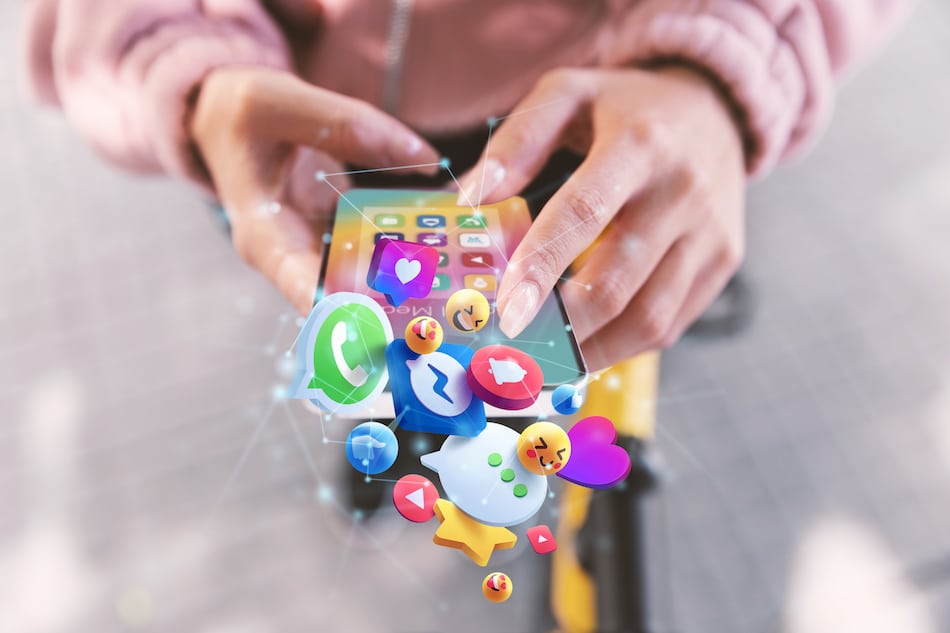Key Takeaways
IRL streaming (“In Real Life”) is the art of going live from real-world locations such as parks, streets, shops, and festivals, and letting life unfold on camera. Unlike studio or gaming streams, IRL thrives on unpredictability. Viewers tune in not for polished production, but for unfiltered connection, spontaneous moments, and real-time interaction that lets them shape what happens next.
The Power of IRL Streaming
At its core, IRL streaming’s appeal lies in three things:
- Authenticity and Connection: Viewers feel like they’re walking beside the streamer, not watching from afar.
- Immersive Experiences: From exploring street markets to rooftop adventures or random meet‑and‑greets, it’s a virtual field trip every time.
- Real‑time Interaction: Chat isn’t just commentary. It can drive the content, with viewers influencing decisions on the fly.
Where It Came From
The roots trace back to Justin.tv’s “lifecasting” days. Streaming platforms like Twitch and YouTube Live, originally built for gaming, later embraced IRL as creators pushed boundaries. Advances in mobile tech and connectivity made it easy for anyone with a phone and a hotspot to go live from nearly anywhere.
Why It Matters
IRL offers creators a powerful way to grow. Just look at Kai Cenat, whose spontaneous streams often go viral. It’s raw, real, and wildly engaging. But the same unpredictability that makes IRL streaming exciting also brings risks such as public disturbances, safety concerns, and legal gray areas.
From Travel to Twitch Chat: Inside the IRL Streaming Content Ecosystem
In a world where smartphones and high-speed internet are ubiquitous, a new form of live content has emerged, taking viewers beyond the screen and into the real-time lives of creators.
What Does IRL Streaming Actually Look Like?
An effective IRL streaming ensures that the content is as varied as the real world itself. While some creators roam city streets abroad, others stream coffee runs, concerts, or social experiments in their hometowns. Here’s a snapshot of what’s trending:
- Travel & Exploration: From Tokyo side streets to Icelandic waterfalls, viewers tag along on global adventures.
- Daily Life & Vlogs: Grocery hauls, cooking sessions, or a walk to the post office. It’s mundane, but oddly magnetic.
- Events & Festivals: IRL shines at conventions, parades, and live shows, offering viewers a front-row seat at these events.
- Interactive Challenges: From “chat chooses what I eat” to public dares, viewers become co-pilots.
- Fitness & Wellness: Outdoor workouts, hikes, and health Q&As keep the content active and engaging.
- Creative & Educational: Painting murals, street interviews, or science experiments in public? It’s all fair game.
The Power of Real-Time Community
At the heart of IRL streaming is the community. Viewers aren’t just watching—they’re actively shaping the stream. Live chat becomes an integral part of the journey, suggesting where to walk, what to eat, or even helping track down a lost phone. Some viewers take it a step further, sending food deliveries or guiding streamers to hidden local spots. Meanwhile, moderators play a crucial behind-the-scenes role, filtering chat, flagging potential risks, and helping streamers stay focused and safe in fast-moving environments.
The IRL Streamer’s Mobile Studio
Going live on the go requires more than just a phone and good vibes. Most IRL streamers invest in standard and extra equipment such as:
- Camera: Smartphones are standard, but some upgrade to GoPros or mirrorless rigs for high-quality broadcasts.
- Microphone: Lavalier or shotgun mics cut through outdoor noise for clean audio quality.
- Connectivity: Bonded modems or multiple SIMs keep the stream quality steady.
- Power: External batteries are essential for long sessions.
- Stabilizers: Gimbals help avoid shaky footage.
- Backpacks: Custom IRL streaming setups (like LiveU or Gunrun backpacks) turn mobile rigs into full-on studios.
IRL streaming is equal parts creativity and logistics. But for all the technical gear and community love, stepping into the real world also opens the door to very real risks, some of which have played out publicly.
From Travel to Twitch Chat: Inside the IRL Streaming Content Ecosystem
In a world where smartphones and high-speed internet are ubiquitous, a new form of live content has emerged, taking viewers beyond the screen and into the real-time lives of creators.
What Does IRL Streaming Actually Look Like?
An effective IRL streaming ensures that the content is as varied as the real world itself. While some creators roam city streets abroad, others stream coffee runs, concerts, or social experiments in their hometowns. Here’s a snapshot of what’s trending:
- Travel & Exploration: From Tokyo side streets to Icelandic waterfalls, viewers tag along on global adventures.
- Daily Life & Vlogs: Grocery hauls, cooking sessions, or a walk to the post office. It’s mundane, but oddly magnetic.
- Events & Festivals: IRL shines at conventions, parades, and live shows, offering viewers a front-row seat at these events.
- Interactive Challenges: From “chat chooses what I eat” to public dares, viewers become co-pilots.
- Fitness & Wellness: Outdoor workouts, hikes, and health Q&As keep the content active and engaging.
- Creative & Educational: Painting murals, street interviews, or science experiments in public? It’s all fair game.
The Power of Real-Time Community
At the heart of IRL streaming is the community. Viewers aren’t just watching—they’re actively shaping the stream. Live chat becomes an integral part of the journey, suggesting where to walk, what to eat, or even helping track down a lost phone. Some viewers take it a step further, sending food deliveries or guiding streamers to hidden local spots. Meanwhile, moderators play a crucial behind-the-scenes role, filtering chat, flagging potential risks, and helping streamers stay focused and safe in fast-moving environments.
The IRL Streamer’s Mobile Studio
Going live on the go requires more than just a phone and good vibes. Most IRL streamers invest in standard and extra equipment such as:
- Camera: Smartphones are standard, but some upgrade to GoPros or mirrorless rigs for high-quality broadcasts.
- Microphone: Lavalier or shotgun mics cut through outdoor noise for clean audio quality.
- Connectivity: Bonded modems or multiple SIMs keep the stream quality steady.
- Power: External batteries are essential for long sessions.
- Stabilizers: Gimbals help avoid shaky footage.
- Backpacks: Custom IRL streaming setups (like LiveU or Gunrun backpacks) turn mobile rigs into full-on studios.
IRL streaming is equal parts creativity and logistics. But for all the technical gear and community love, stepping into the real world also opens the door to very real risks, some of which have played out publicly.
Content Creator Insurance Guide
What Could Go Wrong? A Reality Check for IRL Creators
IRL streaming isn’t just about high energy and spontaneous moments—it also comes with uniquely real-world risk. Here’s how the landscape breaks down, using real-world examples to illustrate the hazards IRL creators navigate every time they go live.
Physical Safety Risks
Streaming in public means navigating fast-moving situations. FaZe Clan’s Stable Ronaldo nearly drowned during a pool stunt gone wrong. At Kai Cenat’s Streamer University, a participant was seriously injured by an Orbeez gun. This raised questions about safety protocols at creator-led events.
Digital Security & Privacy Risks
Going live in the real world comes with real exposure. Streamer xQc (Félix Lengyel) accidentally displayed his IP address on-screen during a live broadcast when a system error popped up—prompting him to cut the stream early. That brief moment triggered potential doxxing threats, local tracking, and even the risk of hacking into his network.
Reputational & Brand Risks
Controversial moments, intentional or not, can escalate quickly. Kick streamer Jack Doherty continued live streaming after crashing his McLaren while distracted, injuring his camera operator in the process. The broadcast went viral, and the platform permanently banned him afterward.
Legal & Compliance Risks
During a live stream in Japan, popular IRL streamer Johnny Somali was arrested for filming in restricted areas and harassing locals, violating both local laws and cultural norms. Other risks include filming people without consent or inadvertently violating copyright laws through music or visuals caught on stream.
Technical & Operational Risks
Dropped connections or dead batteries can interrupt content or leave many IRL streamers vulnerable. In a rare case, streamer Chrispymate was even struck by lightning through wired earbuds while live streaming during a storm—proof that even controlled environments can hold hidden dangers.
Stream Smarter: A Pre-Flight Checklist for IRL Creators
IRL streaming doesn’t have a rewind button. A few minutes of prep can save you from major headaches later. Here’s a quick checklist to help you stream smart and stay safe.
Location Check
- Research the area: Is it safe? Any history of crowd issues?
- Know the rules: Public vs. private filming, permits, local ordinances.
- Plan exits: Identify safe spots or escape routes in case of trouble.
Content & Consent
- Will others appear on camera? Get verbal or written consent if needed.
- Check local audio laws: Some places require both parties to consent to being recorded.
Privacy Sweep
- Hide Personally Identifiable Information (PII): No addresses, license plates, reflections, or on-screen documents.
- Listen carefully: Avoid picking up private conversations or background noise.
Gear & Tech Test
- Test your connection: Use a bonded modem or a reliable hotspot.
- Power up: Fully charge gear and bring backups.
- Run a dry test: Check camera, microphones, overlays, and stream stability.
Emergency Plan
- Set a contact: Someone who can help or call for support.
- Know local emergency numbers.
- Create a “panic button”: A phrase or signal to instantly end the stream if needed.
Protect Your Stream Like a Pro
Risk is part of what makes IRL streaming so dynamic, but that unpredictability also calls for a smart, intentional approach. The good news? You don’t need to compromise your creativity to protect yourself. A combination of best practices and the right insurance coverage can help you navigate challenges without losing momentum.
Physical Safety: Staying Aware on the Go
Live streaming in public means navigating crowds, strangers, and unfamiliar spaces—all while managing equipment and interacting with your audience. However, with the right tools for streaming on multiple platforms, setting things up can be done in just a few clicks, which requires more awareness than a studio setup.
Best practices include:
- Live streaming with a trusted friend or hiring event security when appropriate
- Using lower-profile gear to avoid attracting attention
- Choosing well-lit, populated areas with clear exits
- Avoiding volatile or isolated locations
- Taking basic self-defense or situational awareness training
Coverage to consider:
- General Liability Insurance: Helps cover third-party injury or property damage (e.g., someone trips over your tripod).
- Personal Accident or Health Insurance: Ensures you’re covered if you’re injured while live streaming.
Digital Security: Guarding Your Online Presence
Even a few seconds of exposed personal info while using a video camera can lead to real harm like doxxing, hacking, or identity theft. For IRL streamers, including those using browser sources, privacy protection requires active, ongoing effort.
Key practices include:
- Using a VPN when on public Wi-Fi
- Activating multi-factor authentication on all accounts
- Keeping IDs, documents, and screens out of frame
- Having moderators monitor for sensitive info in chat
- Avoiding real-time mentions of your location, address, or travel plans
Coverage to consider:
- Cyber Liability Insurance: Covers cyberattacks, data breaches, doxxing fallout, and the cost of responding to these events, including PR and legal fees.
Reputation & Brand Protection: Owning Your Narrative
IRL content is raw and unscripted, which is great for authenticity, but also very risky. One bad interaction or misjudged moment can go viral for the wrong reasons.
Protect your brand by:
- Establishing personal boundaries for on-stream behavior
- Staying composed during tense or unpredictable encounters
- Preparing a plan to respond to negative feedback or backlash
- Creating a community culture that reflects your values
Coverage to consider:
- Media Liability Insurance: Offers protection from defamation, libel, or copyright claims.
- Cyber Liability: May include access to crisis management and public relations support following reputational fallout.
Legal & Compliance: Knowing the Rules Before You Hit ‘Live’
Filming in the real world means brushing up on real-world laws. Whether you’re recording in a private venue or capturing copyrighted content in the background, the legal landscape can shift quickly depending on location.
Stay compliant by:
- Getting consent from identifiable individuals, especially in private spaces
- Avoiding the use of copyrighted music, artwork, or video
- Researching local ordinances, especially noise or recording laws
- Understanding consent requirements for audio recording (one-party vs. two-party laws)
Coverage to consider:
- Media Liability Insurance: Covers legal defense and settlements tied to content-related issues like copyright infringement or invasion of privacy.
- General Liability Insurance: May also step in if legal claims arise from a physical incident.
Technical & Equipment Risks: Keeping the Stream Running
Glitches happen, but some can cause more than just viewer drop-off. To mitigate risks, it’s important to plan for interruptions—lost footage, interrupted streams, or damaged gear can lead to financial losses, reputational damage, or even unsafe situations.
Protect your setup by:
- Carrying spare batteries, cables, and mobile hotspots
- Using bonded connections or multiple SIMs to prevent signal loss
- Packing backup gear, especially for audio and power
- Preloading emergency or “BRB” screens into your live streaming software
Coverage to consider:
Transit & Transportation Insurance: Protects cameras, microphones, backpacks, and other gear from theft, damage, or loss while in use or in transit.
Where Live Streaming Meets Insurance: Founder Shield Has You Covered
At Founder Shield, we understand the unique risks that come with being live, mobile, and always on. We’ve worked with top creators across various streaming platforms, including high-profile IRL streamers, and built custom insurance solutions designed specifically for the fast-paced world of content creation. Our Media Insurance policies are user-friendly and tailored to cover everything from on-the-ground liability to content-related legal issues, giving streamers the freedom to stay focused on their audience, not their exposure.
Staying protected means staying informed. That’s why our Resource Hub is packed with practical guides, insights, and tools to help streamers and creators at every stage of growth. Whether you’re navigating your first brand deal or expanding your setup, we’re here to help you build smarter, stream safer, and protect your momentum.
Stay One Step Ahead and Stream Confidently
Risk management isn’t something you set and forget. It’s a continuous, behind-the-scenes process that evolves with your content, your audience, and the real world. A quick post-stream review, regular gear checks, and keeping up with local laws or platform changes can make all the difference. Listening to your moderators and community also helps surface potential risks before they become actual problems.
At its best, IRL streaming is about connection, creativity, and growth. And while it comes with challenges, those can be managed, not feared. With a clear strategy, the right tools, and tailored insurance, streamers can protect what they’ve built and keep doing what they love. The goal isn’t to limit spontaneity. It’s to support it, safely and sustainably.
Because when you think ahead, you stream with confidence—and that’s when the best content happens.
Insurance Rebuilt, End-to-End









